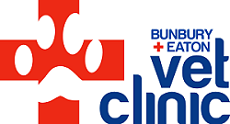
Typical appearance of GDV (Bloat)
This radiograph shows what a little kid might call the “bottom sign”. That might sound funny, but this is actually one of the most serious conditions we see as vets. This radiograph tells us that this dog has a twisted stomach, and it needs emergency treatment. This condition is called Gastric Dilatation and Volvulus (GDV), or Bloat.
What Causes GDV?
We still don’t understand a lot about this condition. We know that dogs with a deep chest, such as Great Danes, Dobermans and Weimaraners, are more prone to GDV. There are also suggestions that eating large meals, exercising after eating, eating too fast, and eating from an elevated platform may all contribute to GDV developing.
What are the signs of GDV?
The most common signs we see in GDV cases include the abdomen getting bigger, and the dog trying to vomit but not bringing anything up.
What do I do if I think my dog has GDV?
GDV is a true emergency. Affected dogs can die in as little as one hour. If you notice your dog’s belly getting bigger, or if it is trying to vomit but not producing anything, please call your vet urgently. Don’t “wait and see” what happens, or wait until your vet is open. Any delays could be fatal.
What will my vet do to treat my dog?
To get a diagnosis of GDV, we will normally take a radiograph of your dog’s abdomen. There are some very typical changes which we can normally see on radiographs. Once we have confirmed a GDV, we will treat the dog for shock with intravenous fluids and oxygen, treat any other complications such as heart arrhythmias, and then try to release some of the pressure from the stomach. Once the dog has been stabilised, emergency surgery will be performed to untwist the stomach and anchor the stomach to the abdominal wall to reduce the risk of it twisting again.
This condition is very hard to treat, and even with the best vets around 5% of pets will not survive the surgery.
How do I prevent GDV?
The best way to prevent GDV is with a preventative surgery called a “gastropexy”. This is a surgical procedure where the stomach is permanently attached to the abdominal wall. Although not 100% effective, it is considered the best way to massively reduce the risk of GDV developing. This can be done at the same time as desexing, or as a stand-alone procedure.
Other advice includes feeding multiple small meals each day rather than one big meal, and avoiding exercise after eating. Specially designed bowls which slow the dog’s rate of eating can also help.
Contrary to popular belief, feeding from an elevated level actually increases the risk of GDV, so dogs should always be fed at ground level.
The Bunbury and Eaton Vet Clinics offer elective gastropexy surgery for all deep-chested dogs. Please give us a call if you would like to discuss this procedure for your dog.
